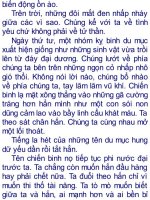Basic Geotechnical Earthquake Phần 5 pptx
Bạn đang xem bản rút gọn của tài liệu. Xem và tải ngay bản đầy đủ của tài liệu tại đây (1.03 MB, 16 trang )
54 Basic Geotechnical Earthquake Engineering
Selection of Design Earthquake
The selection of a design earthquake may be based on:
(a) Known design-level and maximum credible earthquake magnitudes. These are associated
with a fault whose seismicity has been estimated.
(b) Specification of probability of occurrence of the earthquake for a given life of the
structure (such as having a 10 percent chance of being exceeded in 50 years).
(c) Specification of a required level of ground motion. This specification is available in
the code provision.
(d) Fault length empirical relationships.
The original magnitude scale proposed by Gutenburg and Richter is calculated from a
standard earthquake. The standard earthquake is the one which provides a maximum trace
amplitude of 1 mm on a standard Wood Anderson torsion seismograph at a distance of 100
km. Magnitude is the log10 of the ratio of the amplitude of any earthquake at the standard
distance to that of the standard earthquake. Each full integer step in the scale (two to three,
for example) represents an energy increase of about 32 times.
Because of the history of seismology, there are actually several magnitude scales. Modern
earthquakes are described by the moment magnitude, Mw. Earlier earthquake events may be
described by any of a number of other scales. Fortunately, the numerical values are usually
within 0.2 to 0.3 magnitude units for magnitudes up to about 7.5. For larger events the values
deviate significantly.
5.3.4 Intensity
In areas where instrumental records are not available the strength of an earthquake has
usually been estimated on the basis of the modified Mercalli (MM) intensity scale. The MM
scale is a number based mostly on subjective description of the effects of earthquakes on
structures and people. Intensity is a very qualitative measure of local effects of an earthquake.
Magnitude is a quantitative measure of the size of the earthquake at its source. The MM
intensity scale has been correlated with peak horizontal ground acceleration by several investigators.
It has been illustrated in Fig. 5.5.
5.3.5 Peak Horizontal Ground Acceleration
Seismic investigations of activities located in different seismic zones have been made.
These seismic investigations include a site seismicity study. Where such studies have been
completed, they help in determining the peak horizontal ground acceleration. Where a site
seismicity study has not yet been completed, it may be warranted in connection with the
design and construction of an important new facility. In connection with soil related calculations,
the peak horizontal ground acceleration for Seismic Zone 2 may be taken as 0.17g and for
Seismic Zone 1 as 0.1g. ‘g’ refers to acceleration due to gravity. There are standard techniques
of making seismic zones.
5.3.6 Seismic Coefficients
The values of seismic ground acceleration can be determined from Table 5.1 based on
soil types defined as follows:
Site Seismicity, Seismic Soil Response and Design Earthquake 55
(a) Rock with 2500 ft/sec < V
s
< 5000 ft/sec (760 m/sec < V
s
< 1520 m/sec)
(b) Very dense soil and soft rock with 1200 ft/sec < V
s
< 2500 ft/sec (360 m/sec < Vs
< 760 m/sec)
(c) Stiff soil with 600 ft/sec < V
s
< 1200 ft/sec (183 m/sec < V
s
< 365 m/sec)
(d) A soil profile with V
s
< 600 ft/sec (183 m/sec) or any profile with more than 10 ft
(3 m) of soft clay defined as soil with PI > 20, w > 40 percent, and S
u
≤ 500 psf
(24 kpa).
V
s
refers to shear wave velocity in all the soil types. The parameter A
a
in Table 5.1 is
the ground acceleration for rock with no soil and g is acceleration due to gravity.
Fig. 5.5 approximate relationships between maximum acceleration and modified
mercalli intensity (Courtesy: )
56 Basic Geotechnical Earthquake Engineering
Table 5.1 Peak ground acceleration modified for soil conditions
(Courtesy: )
Soil Type Aa = 0.1g Aa = 0.2g Aa = 0.3g Aa = 0.4g Aa = 0.5g
A 0.1 0.2 0.3 0.4 0.5
B 0.12 0.24 0.33 0.4 0.5
C 0.16 0.28 0.36 0.44 0.5
D 0.25 0.34 0.36 0.46 SI
A
a
= Effective peak acceleration
SI = Site specific geotechnical investigation and dynamic site
response analyses are performed.
Note: Use straight line interpolation for intermediate values of A
a
.
5.3.7 Magnitude and Intensity Relationships
For purposes of engineering analysis it may be necessary to convert the maximum
intensity of the earthquake to magnitude. The most commonly used formula is:
M=
+
MM
2
1I
3
(5.2)
M represents magnitude and I
MM
represents intensity. The above formula was derived
to fit a limited database. The database primarily composed of Western United States earthquakes.
It does not account for the difference in geologic structures or for depth of earthquakes,
which may be important in the magnitude-intensity relationship.
5.3.8 Reduction of Foundation Vulnerability to Seismic Loads
In cases where potential for soil failure is not a factor, foundation ties, and special pile
requirements can be incorporated into the design. The function of foundation ties and special
pile requirements is to reduce the vulnerability to seismic loads. Details on these are given
in NAVFAC P-355.1. In cases where there is a likelihood for soil failure (e.g., liquefaction),
the engineer should consider employing soil improvement techniques.
Home Work Problems
1. With neat sketch explain about hypocenter, epicenter, focal depth and epicentral distance.
2. Explain about evaluation procedure for seismic soil response.
3. Discuss about design earthquake magnitude as well as the selection of magnitude level.
4. Write short notes on peak horizontal acceleration and magnitude-intensity interrelation.
LIQUEFACTION
6
CHAPTER
57
6.1 INTRODUCTION
The October 17, 1989 Loma Prieta earthquake was responsible for 62 deaths and
3,757 injuries. In addition, over $6 billion in damage was reported. This damage included
damage to 18,306 houses and 2,575 businesses. Approximately 12,053 persons were reported
displaced. The most intense damage was confined to areas where buildings and other structures
where situated on top of loosely consolidated, water saturated soils. Loosely consolidated
soils tend to amplify shaking and increase structural damage during earthquake. Water saturated
soils compound the problem due to their susceptibility to liquefaction. Consequently, there
is loss of bearing strength.
Liquefaction is a physical process that takes place during some earthquakes. Liquefaction
may lead to ground failure. As a consequence of liquefaction, soft, young, water-saturated,
well sorted, fine grain sands and silts behave as viscous fluids. This behaviour is very different
than solids behaviour. Liquefaction takes place when seismic shear waves pass through a
saturated granular soil layer. These shear waves distort its granular structure, and cause some
of its pore spaces to collapse. The collapse of the granular structure increases pore space
water pressure. Furthermore, it also decreases the soil’s shear strength. If pore space water
pressure increases to the point where the soil’s shear strength can no longer support the
weight of the overlying soil, buildings, roads, houses, etc., then the soil will flow like a liquid.
Consequently, extensive surface damage results.
Fortunately, areas susceptible to liquefaction can be readily identified and the hazard
can often be mitigated. Because of the relative ease of identifying hazardous areas, numerous
liquefaction maps have been made by govenrnment agencies. Liquefiable sediments are young,
loose, water saturated, and well sorted. They are either fine sands or silts. The sediments are
seldom older than Holocene, and are usually only present on the modern floodplains of
creeks and rivers. The map in Fig. 6.1 identifies areas likely to liquefy during a big earthquake
(noted by the letter “L”)
58 Basic Geotechnical Earthquake Engineering
Fig. 6.1 Areas likely to liquefy during big earthquake (Courtesy: )
In many low-lying coastal areas sand volcanoes are formed where underlying saturated
sands liquefy during the seismic shaking. Furthermore, it ejects onto the surface. During the
1906 earthquake, sand volcanoes spouted to a heights around 20 feet in the Salinas Valley
and near Moss Landing. During the Loma Prieta earthquake, extensive liquefaction occurred
along the entire shoreline of the Monterey Bay, as well as in San Francisco’s Marina District
and along the bayshore in Oakland (Fig. 6.2).
Fig. 6.2 Sand Volcanoes (Courtesy: )
Violent ground shaking combined with liquefaction of unconsolidated slough muds led
to the spectacular failure of this bridge (Fig. 6.3). The bridge was on the famous Pacific
Coast Highway 1 near Watsonville. The portions of the highway that collapsed were directly
over saturated slough sediments. Upward acceleration of the bridge during the shaking caused
the structure to separate from its support columns. The bridge then fell back downward, and
the columns punctured through the concrete road surface.
Liquefaction 59
Fig. 6.3 Failure of bridge due to liquefaction (Courtesy: )
Collapsed highway bridge (close-up of support columns), State Highway 1, Struve
Slough, Watsonville is shown in Fig. 6.4. Visible to the left of the columns in this figure are
skid and scrape marks from a California Highway Patrol car. The car flew onto the bridge
at high speed minutes after the earthquake. The driver, who survived the incident, was
unaware that the bridge had collapsed as he raced down the highway in response to an
earthquake emergency.
Fig. 6.4 Failure of bridge due to liquefaction, close-up view (Courtesy: )
Collapsed highway bridge (close-up of support columns from below), State Highway 1,
Struve Slough, Watsonville is shown in Fig. 6.5. This view from below the collapsed bridge
shows the area around the base of a support column where soil was pushed away by the back
and forth motion of the column during the earthquake. The rebar at the top of the column
is still attached to the original location of contact between the column and the bridge. It has
already been reported that the upward acceleration of the bridge during the shaking caused
the structure to separate from the support columns. As the bridge then fell back downward,
the columns punctured through the concrete road surface.
60 Basic Geotechnical Earthquake Engineering
Liquefaction induced road failure, Moss Landing State Beach is shown in Fig. 6.6 (a).
This road was built across an estuary and suffered extensive damage due to liquefaction. It
subsided several meters during the earthquake. As a result, it got separated from the adjoining
sections of road. The exposed cross section of underlying sediments in Fig. 6.6(b) clearly
shows a lower light colored beach sand that liquefied and injected into an overlying dark silty
unit.
Fig. 6.5 Failure of bridge due to liquefaction, close-up view from below (Courtesy: )
Fig. 6.6(a) Liquefaction induced road failure (Courtesy: )
Liquefaction 61
Fig. 6.6(b) Liquefaction induced road failure, exposed cross
section of underlying soils (Courtesy: )
Failed river dike, San Lorenzo River, Beach Flats, Santa Cruz due to liquefaction is
shown in Fig. 6.7. Much of the earthen San Lorenzo River flood control levee in the Beach
Flats area of Santa Cruz were found to slumped and fractured as a result of extreme ground
shaking, as well as due to liquefaction of underlying unconsolidated beach and river sediments.
Fig. 6.7 Failed river dike due to liquefaction (Courtesy: )
62 Basic Geotechnical Earthquake Engineering
Failure and cracks induced by liquefaction have also been observed. These images (Fig.
6.8(a) and Fig. 6.8(b)), probably from the 1906 earthquake event, shows cracks formed by
liquefaction at the San Lorenzo River bed.
Fig. 6.8(a) Crack formation due to liquefaction (Courtesy: )
Fig. 6.8(b) Crack formation due to liquefaction (Courtesy: )
The concept of liquefaction was first introduced by Casagrande. Typical subsurface
condition that is susceptible to liquefaction is newly deposited or placed loose sand. Furthermore,
groundwater table should be near ground surface. During an earthquake, cyclic shear stresses
are applied to loose sand. These cyclic shear stresses are induced due to propagation of shear
waves during earthquake. Consequently, loose sand contracts. This results in increase in pore
water pressure. Seismic shaking takes place too quickly. Consequently, cohesionless soil is
subjected to undrained loading. This is total stress analysis condition. The increase in pore
water pressure during earthquake thus causes upward flow of water to ground surface. At the
ground surface it emerges as mud spouts or sand boils. Consequently, development of high
pore water pressure due to ground shaking caused by earthquake and upward flow of water
Liquefaction 63
turns sand into liquefiable condition. This mechanism is called liquefaction. At the state of
liquefaction, the effective stress is zero. Furthermore, individual soil particles are released
from confinement. It appears that soil particles are floating in water.
Structures on top of loose sand deposit which has liquefied during earthquake will tend
to sink. It also tends to fall over. Buried tanks will tend to float on the surface when loose
sand liquefies. There are other important effects of liquefaction as well.
After the sand has liquefied, the excess pore water will start to dissipate. There are two
important factors governing the duration for which soil will remain in liquefied state. First
is the duration of seismic shaking during earthquake. Second is the drainage conditions of
liquefied soil. The longer the cyclic shear stress application from the earthquake, longer the
state of liquefaction persists. Similarly, stronger the cyclic shear stress application from earthquake,
longer the state of liquefaction. Furthermore, if the liquefied soil is confined by an upper and
lower clay layer, it will take longer duration for excess pore water pressure to dissipate. This
is accomplished by flow of water from liquefied soil. After liquefaction process is complete,
soil is in somewhat denser state.
Liquefaction can result in ground surface settlement. It can even result in bearing
capacity failure of foundation. Liquefaction can also cause or contribute to lateral movement
of slopes.
Liquefaction of soils has been extensively studied in laboratory. There is considerable
amount of published data available concerning laboratory liquefaction testing. As per Ishihara
(1985), laboratory tests were performed on hollow cylindrical specimens of saturated river
sand. Testing was done in torsional shear test apparatus. Two samples were tested. First was
having relative density 47% and the other was having relative density 75%. Prior to cyclic
shear testing, both specimens were subjected to same effective confining pressure. Both
samples were then subjected to undrained conditions during cyclic shear stress application.
Cyclic shear stress had constant amplitude and sinusoidal pattern in both samples. Sand
having lower relative density was subjected to lower constant amplitude cyclic stress than the
sample having higher relative density (amplitude ratio of lower to higher relative density
specimen = 0.32). For sand having lower relative density, there was sudden and rapid increase
in shear strain (as high as 20%) during constant amplitude cyclic shear stress application. On
the other hand in sand having higher relative density, shear strain was found to slowly increase
with application of constant amplitude cyclic shear stress. During application of cyclic shear
stress, excess pore water pressure was found to develop in both the specimens. When the
excess pore water pressure becomes equal to initial effective confining pressure, the effective
stress becomes zero. Consequently, shear strain dramatically increases. This is liquefaction
condition. The condition of effective stress zero and sudden shear strain increase (i.e. liquefaction
condition) was observed in sand having low relative density. For sand having high relative
density, effective stress became zero due to cyclic shear stress application. However, sudden
shear strain increase was not observed. This happens because on reversal of cyclic shear
stress, dense sand dilates. Consequently, undrained shear resistance increases. Liquefaction
is thus a momentary condition in dense sands. This mechanism in dense sands is also called
cyclic mobility. Furthermore, in sand having lower relative density, there was permanent loss
in shear strength with each additional cycle of constant amplitude shear stress. No such
64 Basic Geotechnical Earthquake Engineering
observation was made in sand having higher relative density. Earthquakes will not subject soil
to uniform constant amplitude cyclic shear stress. However, it can be modeled accordingly.
Consequently, experimental results as explained above are of great importance.
As per See and Lee 1965, cyclic triaxial tests were performed. Testing was done on
saturated specimens of river sand. Cylindrical specimens were first saturated. Then they were
subjected in triaxial apparatus to an isotropic effective confining stress. This stress was of
constant magnitude. Samples were then subjected to undrained condition during cyclic deviator
stress application. Numerous samples were tested. Testing was done at different void ratios
as well as at different cyclic deviator stress amplitude value. Number of cycles required for
initial liquefaction and 20% axial strain was determined under each condition. In samples
having same initial void ratio and same initial effective confining stress, with increase in
deviater cyclic stress amplitude, there was decrease in number of cycles required for liquefaction.
For a sample having same initial void ratio and same effective confining pressure, cyclic
deviator stress amplitude required to cause liquefaction decreases as the number of cycles of
deviator stress is increased. A dense sand was found to have greater resistance for liquefaction.
It would require higher deviator cyclic stress amplitude or more number of cycles of deviator
cyclic stress to cause initial liquefaction as compared to same soil in loose state (Seed and
Lee, 1966).
Finally, based on above two experimental observations, it can be concluded that liquefaction
is more dominant in loose sands.
6.2 FACTORS GOVERNING LIQUEFACTION IN THE FIELD
There are many factors governing liquefaction of in-situ soil.
1. In order to have liquefaction, there must be ground shaking. Character of ground
motion, such as acceleration and duration of shaking, determines shear strains. Shear
strains cause contraction of soil particles. Furthermore, it also leads to development
of excess pore pressure. These activities lead to liquefaction. Most common cause
of liquefaction is seismic energy released during earthquake. Potential for liquefaction
increases with increase in earthquake shaking. It also increases due to duration of
shaking. It has been reported that shaking threshold needed for liquefaction is peak
ground acceleration of 0.1g and local earthquake magnitude of about 5. Consequently,
liquefaction analysis is not needed at sites having peak ground acceleration less than
0.1g and local earthquake magnitude less than 5 during earthquakes.
2. The condition most conducive to liquefaction is near surface ground water table
location. Unsaturated soil located above groundwater table will not liquefy. If at a
particular site, soil is currently above groundwater table and is highly unlikely to get
saturated for given foreseeable changes in hydrologic regime, such soil need not be
evaluated for liquefaction potential. If groundwater table at a particular site fluctuates
significantly, liquefaction potential also fluctuates. In general, highest historic groundwater
level should be used in liquefaction analysis. Liquefaction can also occur in very
large masses of sands or silts that are dry and loose. If such soils are loaded so
rapidly that escape of air from voids is restricted, they can liquefy. This mechanism
Liquefaction 65
of liquefaction in dry and loose sand is called running soil or running ground. However,
contribution to liquefaction by this mechanism is not significant. Technically, the
term liquefaction is used only for soils located below groundwater table level.
3. Soil types most susceptible to liquefaction during earthquake is deposit consisting of
fine to medium sand. Sands containing low plasticity fines are also susceptible to
liquefaction. Some times liquefaction takes place in gravelly soils as well (Kuwabara
and Yoshumi, 1973). Consequently, all the soils susceptible to liquefaction are cohesionless
soils. Approximate listing of cohesionless soils from least to most resistant to liquefaction
is clean sands, nonplastic silty sands, nonplastic silt and gravels. However, there are
exceptions. Tailings derived from mining industry are essentially composed of ground-
up rocks. They are classified as rock flour. Rock flour in water saturated state is not
having significant cohesion. It behaves like clean sand. Similar to clean sand they are
found to have low resistance to liquefaction. Based on laboratory experiments, it
has been observed that during earthquakes great majority of cohesive soils in
general do not liquefy. This fact has been verified by field observations as well. For
cohesive soil to liquefy it must have 15% of particles (based on dry weight) less
than 0.005 mm particle size, liquid limit less than 35% and water content greater
than 0.9 times the liquid limit. If any one of the criteria is not met, cohesive soil
is not considered to be susceptible to liquefaction. Although cohesive soil may not
liquefy, there could be significant undrained shear strength loss due to seismic
shaking during earthquakes.
4. Cohesionless soils in loose relative density state are susceptible to liquefaction. Loose
nonplastic soils will contract during seismic shaking. This causes development of
excess pore water pressure. Upon reaching liquefaction, there will be sudden and
dramatic increase in shear displacement for these soils. For dense sands, initial
liquefaction does not produce large deformations. This is due to dilation tendency
of sand upon reversal of cyclic shear stress. Consequently, dilative soils need not be
evaluated for liquefaction since they are not susceptible to liquefaction. Dilative
soils are not susceptible to liquefaction because their undrained shear strength is
more than their drained shear strength.
5. Uniformly graded nonplastic soils form more unstable particle arrangements. They
are more susceptible to liquefaction than well graded soils. Well-graded soils have
particles filling the void spaces between large particles. This reduces potential contraction
of soil, resulting in less excess pore water pressure being generated during earthquake.
Even field observations indicate that most liquefaction failure involve uniformly
graded granular soils.
6. Hydraulic fill (fill placed under water), tend to be more susceptible to liquefaction
because of loose and segregated soil structure. This kind of structure is created by
soil particles falling through water. Natural soil deposits formed in lakes, rivers or
oceans are also susceptible to liquefaction due to same reason. Soils which are
especially susceptible to liquefaction are formed in lacustrine, alluvial and marine
depositional environments.
66 Basic Geotechnical Earthquake Engineering
7. If excess pore pressure can quickly dissipate, soil may not liquefy. Consequently,
highly permeable gravel drains or gravel layers can reduce liquefaction potential of
adjacent soil as they will help in dissipating pore pressure rapidly.
8. Greater the confining pressure, lesser the soil has tendency to liquefy. Deeper groundwater
table location, soil located at deeper depth below ground surface and surcharge
pressure applied at ground surface are the conditions creating a higher confining
pressure. It has been reported that possible zone of liquefaction extends from ground
surface to a maximum depth of 15 m. Deeper soils usually don’t liquefy due to
higher confining pressure. However, that doesn’t mean that liquefaction analysis
should not be performed for a soil located below a depth of 15 m. For example in
sloping ground, such as sloping front in the form of water front structure should be
analyzed for liquefaction. Similarly sloping shell of earthen dam are places where soil
layer below 15 m depth should be analyzed for liquefaction. Liquefaction analysis
should be performed for the entire thickness of soil deposit that has been loosely
dumped in water even if it exceeds 15 m thickness. Finally it can be said that
experience and judgement is required in the determination of proper depth at which
liquefaction analysis should be terminated.
9. Soils having rounded particles tend to densify more easily than angular shaped soil
particles. Consequently, rounded soil particles is more susceptible to liquefaction
than soil containing angular soil particles during earthquake.
10. New soil deposits are more susceptible to liquefaction than old deposits. Longer a
soil is subjected to confining pressure, greater the liquefaction resistance. Consequently,
older deposits have greater liquefaction resistance. Increase in liquefaction resistance
with time is due to deformation or compression of soil particles into more stable
arrangements. There may also be development of bonds due to cementation at
particle bonds with time.
11. Historical environment of soil can affect its liquefaction potential. Older soil deposits
that have already been subjected to seismic shaking have increased liquefaction
resistance. However, newer deposits of same soil at same density not subjected to
seismic shaking are more prone to liquefaction. Liquefaction resistance also increases,
with increase in overconsolidation ratio. Furthermore, it also increases with increase
in coefficient of earth pressure at rest. Consequently a soil that has been preloaded,
has a higher resistance to liquefaction than the soil which has not been preloaded.
Underlying soil when the upper layer has been removed by erosion is one such
example which has been preloaded.
12. Construction of heavy building on top of sand deposit decreases liquefaction resistance
of soil. Soil is subjected to shear stress caused by building load. Soil requires smaller
additional load from the earthquake to cause contraction. Contraction causes liquefaction.
Consequently, liquefaction resistance of soil decreases in the presence of building
load. Building load also must be considered in liquefaction induced settlement.
Building load also must be considered in liquefaction induced bearing capacity as
well as in stability analysis.
Liquefaction 67
6.3 LIQUEFACTION ANALYSIS
The first step in liquefaction analysis is to determine whether soil has ability to liquefy
during earthquake. Most of the soils that are susceptible to liquefaction are cohesionless.
Cohesive soils liquefy only under specific conditions. These conditions have been discussed
in previous section. Most common type of analysis to determine liquefaction potential is the
use of standard penetration test (Seed and Idriss, 1971). There is another widely used technique
of liquefaction analysis. This is called simplified procedure. The steps involved in simplified
procedure are as follows:
1. First step is to determine if the soil has ability to liquefy.
2. The soil must be below groundwater table. Liquefaction analysis can also be performed
if it is anticipated that groundwater table will rise in future so that eventually soil will
be below groundwater table.
3. Next step of simplified procedure is to determine the cyclic stress ratio (CSR).
Cyclic stress ratio is induced during earthquake. Determination of cyclic stress ratio
requires information about peak horizontal ground acceleration. Peak horizontal
ground acceleration is caused due to earthquake.
4. By using the standard penetration test, the cyclic resistance ratio (CRR) of the soil
is determined. If the CSR induced by earthquake is greater than CRR determined
from standard penetration test, liquefaction of soil will take place during earthquake
and vice versa.
5. Finally factor of safety against liquefaction is determined as FS = CRR/CSR. FS
represents factor of safety.
6.3.1 Cyclic Stress Ratio (CSR) Caused by Earthquake
To determine CSR earthquake equation, it is assumed that ground surface is level.
Furthermore, soil column is assumed to have unit width. Length of soil column is assumed
to move horizontally as a rigid body due to maximum horizontal acceleration exerted by
earthquake at ground surface (refer Fig. 6.9).
Fig. 6.9 Conditions assumed for the derivation of CSR earthquake equation (Courtesy: Day, 2002)
given as, r
d
= 1 – 0.012z. z is depth in meters and is measured from ground surface. σ
v0
and
σ
v0
′
in equation (6.4) can be obtained from basic geotechnical analysis. Peak ground acceleration
(a
max
) caused by earthquake has already been discussed. It is obtained from seismogram data.
Consequently, equation (6.4) can be used for CSR determination for a particular magnitude
earthquake.
6.3.2 Cyclic resistance ratio (CRR) from standard penetration test
Cyclic resistance ratio represents liquefaction resistance of in situ soil. Standard
penetration test data is used for this purpose. There are several advantages of using
standard penetration test to evaluate liquefaction potential. Boring is excavated to perform
the standard penetration test. Groundwater table location can be observed and measured
in the bore hole. In clean sand, while doing standard penetration testing, sampler will not
be able to retain soil sample. For other soils, soil can be retained in the sampler. Furthermore,
it can be visually classified to estimate percentage of fines. Then it can be brought in
laboratory for further classification study to assess liquefaction susceptibility of soil.
Furthermore, factors increasing liquefaction resistance also increase the standard penetration
value. Well graded dense sands are more resistant to liquefaction and have high standard
penetration value. On the other hand uniformly graded soil with loose or segregated soil
structure is more susceptible to liquefaction. Consequently, these soils have lower standard
penetration value. It has been reported that for standard penetration value between 0
and 20, soil is highly susceptible to liquefaction. For standard penetration value larger
than 30, there is no significant damage due to liquefaction. Fig. 6.10 can be used to
determine cyclic resistance ratio (CRR). For most of the data of Fig. 6.10, the earthquake
magnitude is close to 7.5 (Seed et al, 1975). Three lines of the figure are for soils
containing 35, 15 or
≤ 5 percentage fines. The line is at boundary. Data to the left of line
indicates liquefaction during earthquake. Data to the right indicates no liquefaction
during earthquake.
(N
1
)
60
in the x-axis of Fig. 6.10 represents field standard penetration value. This value
has been corrected for field testing as well as for overburden. In order to use Fig. 6.10, this
parameter is determined first from standard penetration testing. Estimated percentage of
fines in the sample is then determined by performing field and laboratory analysis. Soil with
more number of fines have higher liquefaction resistance. Fig. 6.10 is applicable for nonplastic
silty sands and plastic silty sands. It is also applicable to cohesive soils meeting the criteria
of liquefaction. By knowing (N
1
)
60
and estimated percentage of fines, CRR of the soil can
be estimated from Fig. 6.10. From Fig. 6.10 it is clear that for (N
1
)
60
value greater than 30,
clean sand will not liquefy for an earthquake of magnitude about 7.5. This value of (N
1
)
60
corresponds to sand in dense or very dense state. Fig. 6.10 is applicable for earthquake
magnitude of about 7.5. As the earthquake magnitude increases, duration of ground shaking
also increases. Consequently, cyclic shear strain will increase. This decreases liquefaction
resistance of soil. For earthquake magnitudes other than 7.5, the CRR obtained from Fig.
6.10 is multiplied by magnitude scaling factor. Magnitude scaling factor has been given in
Table 6.1.
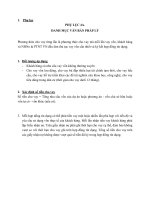
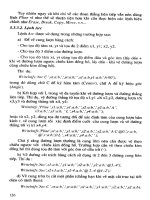
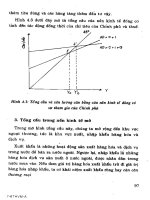
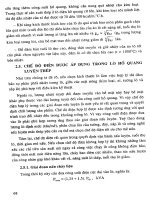
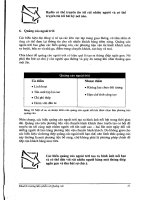
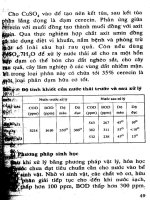

![[Địa Chất Học] Phân Loại Đất & Xây Dựng Bản Đồ Đất - TS.Đỗ Nguyên Hải phần 5 pptx](https://media.store123doc.com/images/document/2014_07/14/medium_mnd1405279205.jpg)
